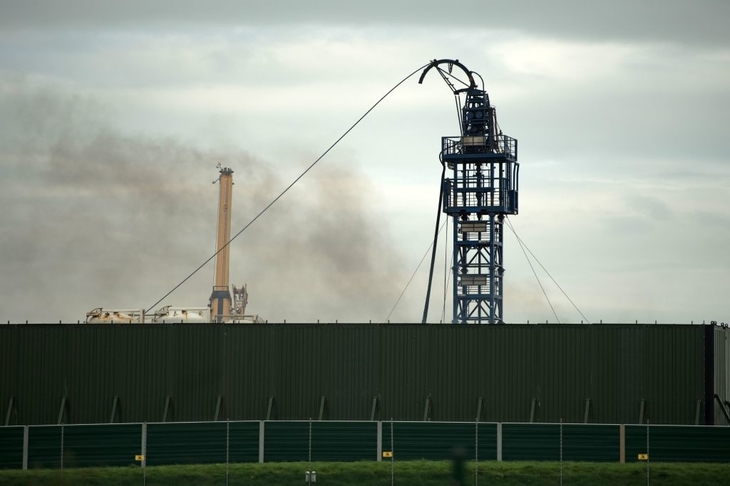So, just a week after starting work on releasing the gas trapped in the shales beneath Lancashire, energy company Cuadrilla Resources decided to stop work, at least for the rest of the day. Soon after they had started pumping water into the rocks a mile below the surface, there were a series of microseismic events – tiny earth tremors. The green blob and their friends in the mainstream media were waiting, and quickly launched their habitual barrage of moral indignation.
The Metro, for example, breathlessly reported that nearby Blackpool had been ‘hit by four earthquakes’. The Guardian was likewise certain that these were ‘earthquakes’. Watching seismologists were much amused at all the huffing and puffing, wondering whether these were the smallest tremors ever to be reported in multiple news outlets.
And small they certainly were. The one that prompted Cuadrilla to halt work for the day was just magnitude 0.4, and the others were considerably smaller than that. To put this in perspective, a tremor of this size has an energy release approaching that of a hand grenade. But because the energy is released a mile below ground, it is never felt at the surface.
In fact, you would need a much larger tremor before people would feel anything. A magnitude 3 tremor is the energy equivalent of the ‘Mother of All Bombs’, the largest non-nuclear weapon in the US arsenal, which was famously dropped onto Islamic State forces last year. Nevertheless, at the surface, a tremor of this size would only be felt as a distant rumbling – something like a lorry driving past your house. The possibility of it causing damage would be very small.
So why then did a tremor, thousands of times smaller cause Cuadrilla stop work? The reason is that they are having to work with a regulatory regime that is quite mindbogglingly absurd. Ministers have decided that if there are any tremors of magnitude 0.5 or above, the company must stop work entirely until given permission to restart. This is, not to put too fine a point on it, completely bonkers.
The regulatory regime is obviously a joke, but in fact it’s worse than that. Down in Cornwall, drilling work has just started on the United Downs Deep Geothermal Project. Frackers try to avoid faults, but geothermal projects target them directly – they are a way to get water down to greater depths, where it can be heated up by the rocks before being recovered to be used for energy generation. Seismicity is therefore a fact of life for geothermal projects.
Occasionally it has caused problems. A geothermal project in Basel a few years ago caused a series of magnitude 3 tremors and the project’s insurers had to pay out to meet the resulting damage claims, although the total was not enormous. In other parts of the world, even bigger tremors have been induced. In 2017 in South Korea, a magnitude 5.5 earthquake caused serious damage and was later linked to a nearby geothermal project.
The managers of the project in Cornwall point out that the geology they are dealing with is very different and they say that although they are expecting hundreds of tremors, they expect very few to be felt at the surface. I have no doubt they are right. My point here is not that the United Downs project presents a threat, but that the regulatory regime for shale gas operators is hypocritical. Millions of gas wells have been fracked, yet the largest earth tremor ever induced was magnitude 3.8. This is the only example of a fracking-induced tremor being felt at the surface. There are no records of frack jobs having caused damage to property.
So how can it be that geothermal projects, which have caused serious earthquakes, have a much looser regulatory regime than shale gas projects? It’s not only absurd, it is hypocritically absurd too. Unfortunately that’s what happens when you formulate policy with the aim of appeasing the green blob rather than trying to develop new industries. Whatever message the government is sending out it’s certainly not ‘Open for Business’.
Andrew Montford is the deputy director of the Global Warming Policy Forum.






Comments